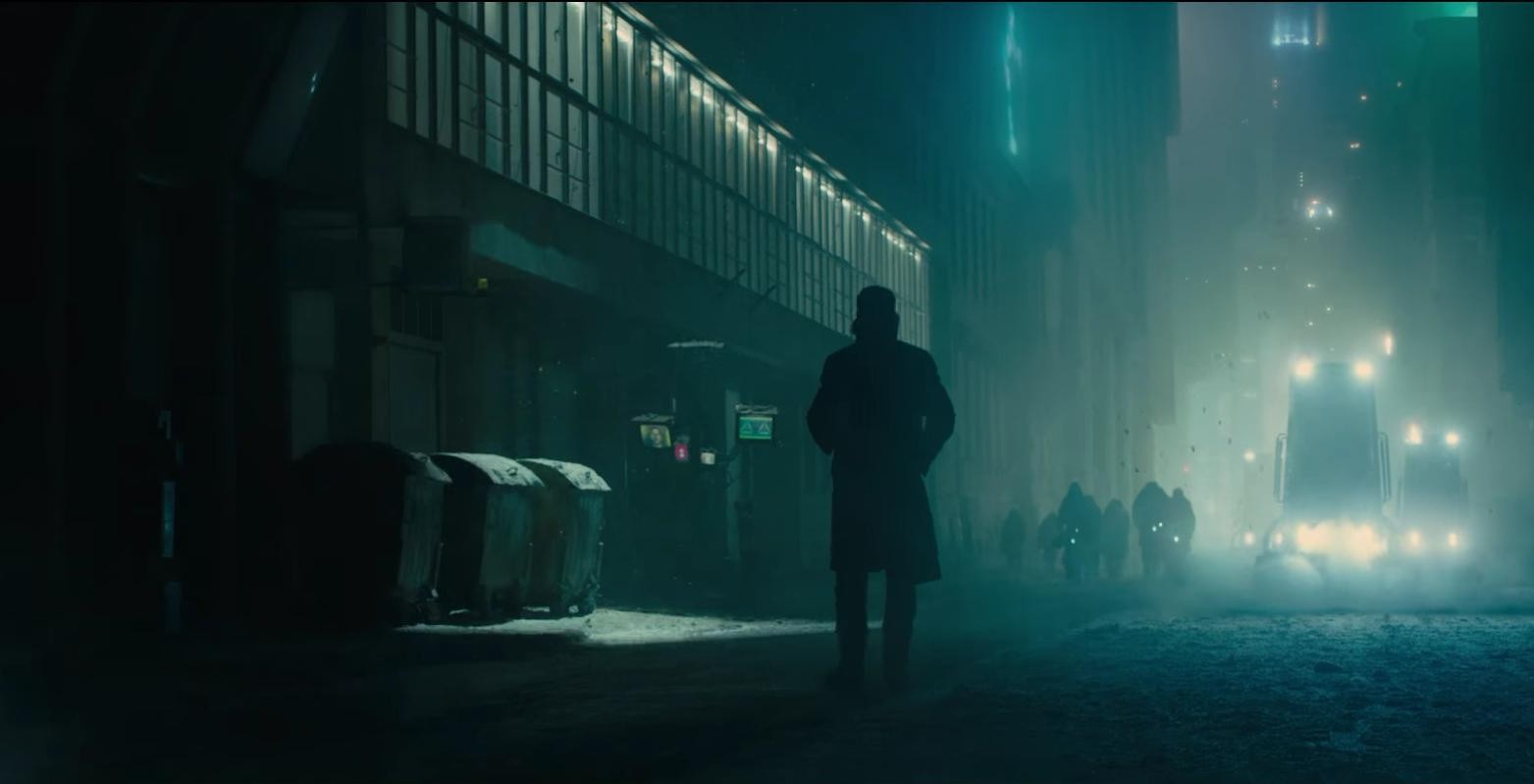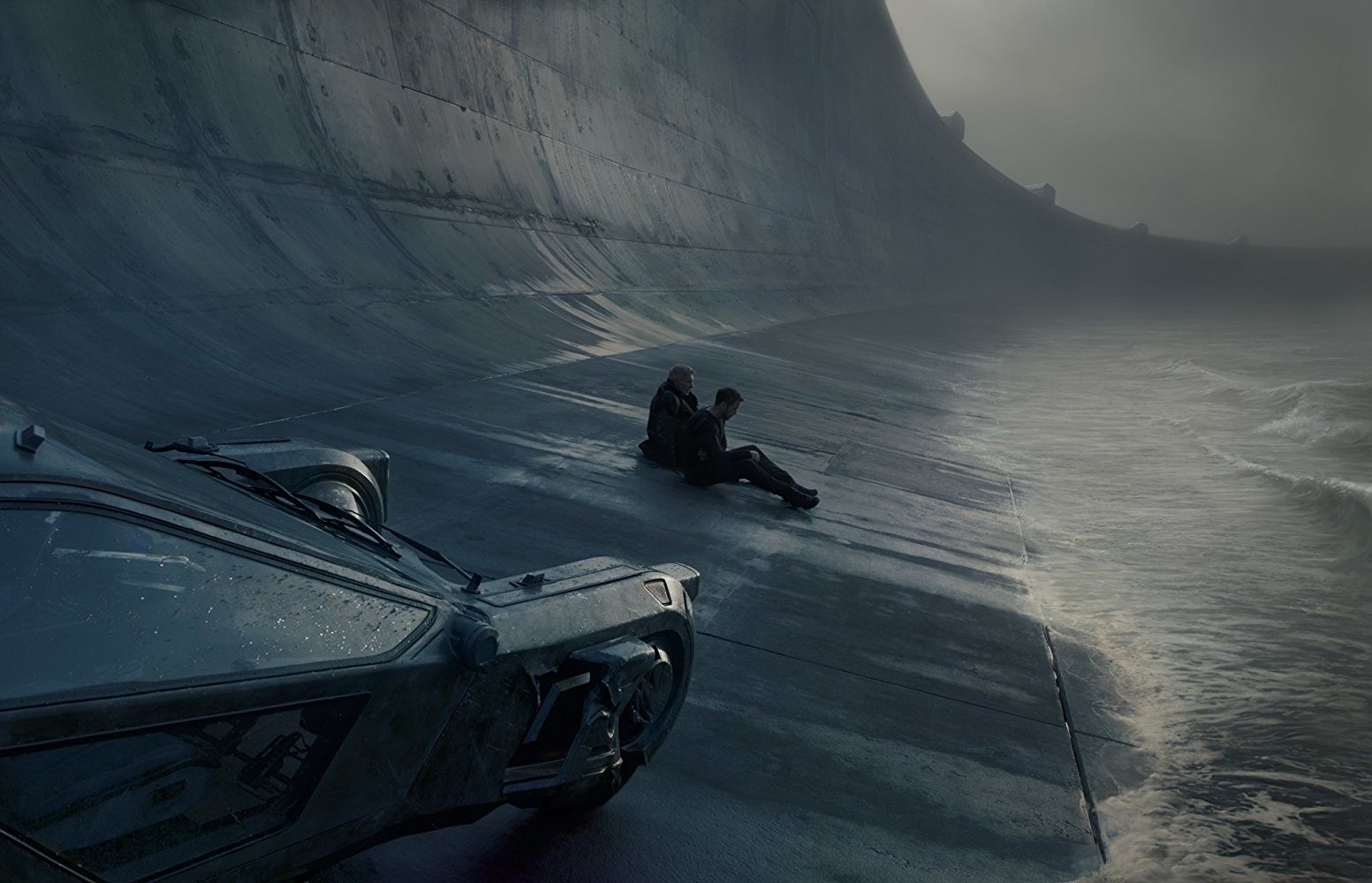If ever a movie made a star out of a building, the movie was Blade Runner and the star was the Bradbury Building. Rumor has it that it was restored in part because of the fame director Ridley Scott conferred on it by making it the setting for the death of Roy Batty, the emotional undoing of Deckard, and one of the more potent testimonies to the fragility of humanity.
The real Los Angeles is thus better off for what happened in the fictional Los Angeles. Then again, 2019 is still two years away.
Blade Runner created a dystopic vision of Los Angeles that remains as culturally potent today — if not more so — than it was when it came out in 35 years ago. It shows up in books, articles, and offhand remarks with astounding regularity. It’s a testament to the arresting visuals of hyper-dense polyglot streets illuminated by sparkling advertisements and the possibility, however slim, that our sunny, spread-out paradise could, someday, become one of the dark places of the earth. After all, perhaps the biggest fantasy to come out of Los Angeles is Los Angeles itself.
For all the theorizing about Blade Runner, it’s worth asking not what Scott was saying about the future of Los Angeles (or of cities in general) but rather why he chose Los Angeles in the first place.
If Blade Runner had taken place in an older, more endearing city — say San Francisco or London — we’d be sad to witness its demise. If it had taken place someplace more generic, like Phoenix, Denver, or Gotham City, we might not care. Los Angeles hit the sweet spot between lamentation and acceptance, and, as Mike Davis says, between sunshine and noir. Director Ridley Scott, like his fellow Briton Reyner Banham, approached Los Angeles with equal parts dread and fascination. His choice was not so much a commentary on the Los Angeles of the future but rather of the Los Angeles of the present.

The challenge that speculative fiction faces, of course, is that eventually the future catches up with it.
Blade Runner 2049 takes place 30 years later, in an even bleaker world. An apparent combination of nuclear war, climate change, and technological sabotage has rendered the planet even less habitable than it was before. The dove that Batty released years ago has left no offspring.
J.F. Sebastian, the sad-eyed toymaker in the first film, jokes, “No housing shortage around here. Plenty of room for everybody” since everyone who can has moved Off-World. That’s how he can afford an entire office building for his dolls and marionettes and how Deckard can afford to live in an architectural masterpiece on a cop’s salary. In the intervening years, though, the housing shortage has returned with a vengeance, not necessarily because the world has more inhabitants but because it has less land. The moral question, of course, is whether the city should accept all who need safe haven. That’s the same question that today’s Los Angeles is asking itself – or should be asking itself, at any rate.
In 2049, untold numbers of stragglers, humans and replicants alike are forced into cities, where they subsist on synthetic food and artificial light. In fact, there may be no cities – plural. From the looks of things, there may be nothing else left besides Los Angeles, with all of humanity and non-humanity crammed into a piece of land whose chief virtue is that it is not radioactive. K, the new blade runner designed to hunt his own kind, searches among tens — or maybe hundreds — of millions of Los Angeles residents, all waiting for their time to die.
Areal shots depict the city’s familiar endless rows of boulevards and residential streets. The houses that dot Reyner Banham’s Plains of Id are replaced by high-rise shantytowns, made up of apartment buildings, each many stories tall, each more dilapidated than the last. Mere dingbats they are not. In this Blade Runner, the billboards walk the street, as 80-foot tall interactive holograms that shake their asses just for you. (We’ve come a long way from Angelyne.) Skyscrapers rise into the ochre fog, and all is overshadowed by the new citadel of the Wallace Corporation, the corporation that rose from the ashes of Tyrell.
There’s a popular Angeleno parlor game in which you try to spot real-life locations, whether they’re playing themselves or standing in for other places. The original Blade Runner was not all fantasy. Somewhere beneath the gas flares, the billboards, and Tyrell’s pyramid are the Ennis House, Union Station, and, of course, the Bradbury Building. These locations give Blade Runner a sense of reality, at least to those of us who live in L.A. -- a chilling reminder that that the future may be closer at hand than we think.
That game brings few rewards with Blade Runner 2049.
Director Denis Villeneuve wisely avoided the Bradbury Building, which, in the world of Blade Runner, is as fraught and freighted as Calvary. But it was far from his only omission.
In fact, not a single, structure or landscape connects fiction to reality. Villeneuve offers no ruins or repurposed vestiges of the old city. The camera catches no glimpses of a ruined Dodger Stadium, a looted Getty Center, or even a lifeless palm tree. The Wilshire Grand does not stand next to the fictional police station. We know Blade Runner 2049 takes place in Los Angeles only because of arbitrary signifiers, like the LAPD, and because of its cosmetic resemblance to the city in the previous film, not to the one that lives and breathes, evolving before our eyes.
In only a single, fleeting sequence in does the cityscape of Los Angeles becomes legible. K flies his Spinner police cruiser over a recognizable, but altered, expanse of the Los Angeles Basin towards what used to be the ports of Los Angeles and Long Beach. Tendrils of ocean creep into what used to be Venice and the other coastal communities. A metal seawall the height of the Hoover Dam and width of the coastline itself protects the city from the bloated Pacific.
It’s obviously not a prescription. And yet, some among us appreciate the original Blade Runner for its urbanity: the density, the diversity, and the grit. By avoiding Los Angeles entirely, the sequel lacks that exquisite ambivalence, making Los Angeles seem less human — it is a replicant of itself. Los Angeles does not so much play itself as it stands in for the entire world, obliterated beyond recognition. Villeneuve’s vision conveys more about the future of cities in general than it does about Los Angeles specifically. (Las Vegas makes a cameo, however.)

Interestingly, of all the reasons that Scott might have envisioned for the demise of the world, climate change surely was not one of them. Blade Runner came out in 1982, after all. If anything, he probably had in mind the Cold War, signified by passing references to our them-communist antagonists, Russia and China. So, while the fictional city hasn’t changed much, its allegorical power has changed dramatically, as the real threats to humanity have evolved (and, arguably, worsened).
So, Blade Runner may yet turn out to be a prediction. If the Los Angeles of the original Blade Runner was, as Ridley Scott put it, “Hong Kong on a bad day”, the updated version is closer to Mumbai or Lagos. The misery and squalor of K’s Los Angeles of the future prevails today in plenty of real places on our own planet. Add rising seas or an unthinkable human tragedy, and more people may have to cram into smaller areas. Urban planners are going to have to be ready for that — maybe not in California, but in plenty of other places – and we’re going to need compassion, cooperation, and emotional resilience just as dearly as we’re going to need planning wisdom and technological advances.
We’re all going to have to be ready to find out how human we really are.
Images courtesy of Sony Pictures.


